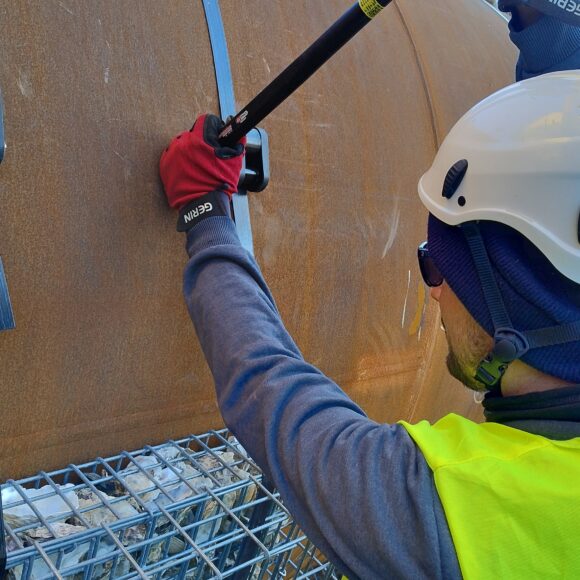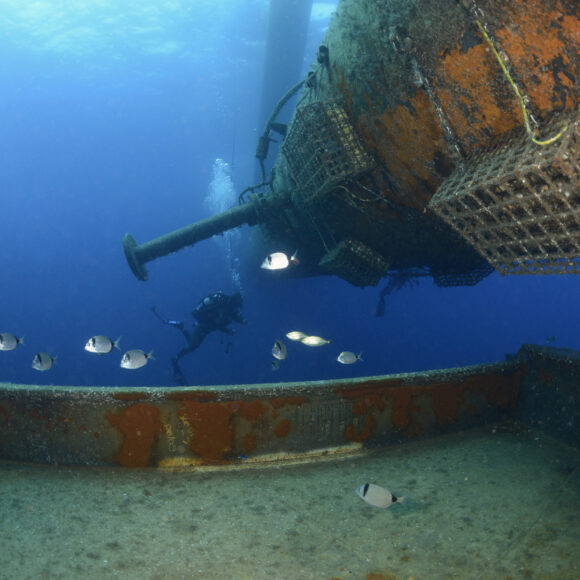Biohut NIDs attached to a Floating Offshore Wind 10 MW Windfloat Turbine
Objectives
To increase the ecological function of floating offshore wind farms by installing artificial plug-in Biohuts®, targeting crustaceans, molluscs and fish.
Short description
In 2025, Ocean Winds, in collaboration with their contractor Ecocean, installed 32 artificial Biohut® nurseries in one of the three Windfloat® platforms. These platforms will be deployed at sea in summer 2025 at the floating offshore wind pilot project, Eolienne Flottante du Golfe du Lion (EFGL)The EFGL project features three 10 MW offshore wind turbines on three WindFloat® units, 16 kilometres from the coast of Leucate and Le Barcares in the French Mediterranean. The project will provide electricity for more than 50,000 homes annually from 2025. .
This is a voluntary initiative from Ocean Winds to test the potential contributions of offshore wind infrastructure to marine ecosystems. The EFGL offshore wind project will be situated close to the French shoreline. Several marine coastal species, such as demersal fish (seabream, seabass, grouper, blennies, etc.), crustaceans (shrimps, crabs, etc.), and molluscs (scallops, clams, etc.) are expected to naturally settle on the floating infrastructure. The Biohuts® are expected to provide a better habitat for these species to thrive in an otherwise unsuitable floating structure, therefore increasing the ecological function of the floating offshore wind farm.
The Biohut ® is an innovative solution which replicates natural nursery habitats using steel cages. The first cage contains a natural substrate made of oyster shells, rocks, and/or coconut fibres fostering the development of molluscs and crustaceans, while a second empty cage surrounds the first, creating refuge for small fish from predators. The 32 Biohuts® are secured around the horizontal braces, following all technical restrictions of both the designer (Principal Power Inc.) and the manufacturer (EIFFAGE).
The EFGL offshore wind project will be deployed in summer 2025. From this point on, an innovative monitoring program including underwater visual census for fish and vagile fauna, passive acoustic monitoring, eDNA analysis, camera traps, drones, and fixed fauna observation will be carried out for five years. To enable monitoring actions, Ocean Winds has already authorised scuba diving activities in the area. This comprehensive program has been scientifically validated by the University of Perpignan, and it builds upon six years of experience testing Biohuts® at two Biodiversity Observation Buoys (BoB and OCG-DATA) located offshore. Finally, the results of these monitoring actions at the EFGL project will provide insights for the application of nature-inclusive design solutions and innovative monitoring techniques in future floating offshore wind projects.
Learn more
1+2+3+4 (a) + 5
Information updated on: 30 October 2025








